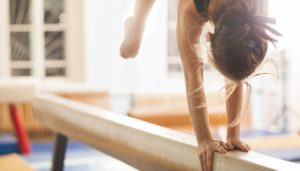If you’re interested in offering dance classes for individuals with special needs at your studio, there are some amazing benefits for studio and students alike. This is what you should know about the benefits of dance for special needs students and some things to consider when putting together special needs dance classes.
The Benefits Of Dance For Special Needs Students
There are many benefits of dance for special needs students, regardless of their different abilities. These include (but certainly aren’t limited to):
- Overall physical fitness
- Improvements in flexibility, strength, and motor skills
- An increase in confidence and self-esteem
- An outlet for creativity and imagination
- Excellent stress relief
1. Physical Fitness
Physical fitness is so important for everyone’s overall health, body, and mind.
Traditional exercising is boring for many people, but dance is fun. Students can come to your class and get their heart rate up, all while having a good time and feeling like they are part of something. Look for dance moves and routines that scale to their ability, such as moves students can do in wheelchairs, with braces, or for those with balance impairments.
2. Flexibility, Strength and Motor Skills
When we dance we make our muscles move and contract, rather than letting the body get weaker, and potentially allowing muscles to get stiff and even atrophied. Luckily, exercise can reverse muscle atrophy and help the body get stronger and more flexible overall.
Motor skills are also improved with dance because it focuses on strength and coordination. And as we dance, our posture and balance improve as well.
The report Dance for Special Needs Students: Building Confidence and Motor Skills, by the University of Northern Colorado, states:
“Some of the benefits from physical activity would be strength, endurance, and increased coordination. Motor capabilities such as speediness, steadiness, and flexibility will increase as well. Children with physical disabilities will also be able to regain or increase muscle strength and balance while mastering milestones such as bending of the knees while walking, following directions, and hand-eye coordination.”
3. Increased Confidence and Self-Esteem
Dance allows students with special needs to be actively involved in their learning. This independence boosts their confidence and self-esteem and can release endorphins in the brain. And, the act of learning and working towards something gives students a sense of accomplishment, and instant gratification, aiding in self-assurance.
A dance class is also a fun and safe environment for them to learn and grow in. Odds are everyone is learning something new and has not yet mastered any of the skills. Therefore, they are able to bond with other students in the common goal, and as a result, may promote better social and interpersonal skills.
4. An Outlet for Creativity and Imagination
There aren’t any rules when it comes to dancing. Sure, there may be some technique involved, but some of the fun of learning choreography is putting your unique spin on what you have learned. Through dance, students can express their emotions in a way that might not be easy to express verbally. They can imagine the best way to move in their minds, and then physically create the movement with their bodies.
The music combined with a general idea of how to move can turn into a beautiful display of creative expression. Dance can activate their imagination and light up their brains in new and exciting ways. In fact, the report from UNC we mentioned earlier states that kinesthetic activities such as dance “may result in an increased ability to learn material” in school.
5. Stress Relief
It’s no secret that living with mental or physical impairments in a world built for non-disabled people can be stressful. Any exercise relieves stress, but the creative outlet that dance provides may alleviate more stress than other forms of physical activity.
Dance can be physically, mentally, and emotionally therapeutic. Students can leave it all on the dance floor, so to speak. When the music comes on, the pain and worry can just leave the room, if only for the time of the class. As your body becomes fully immersed in the movement, your mind enjoys a state of euphoria that can leave residual effects long after the music stops.
How to Offer Special Needs Dance Classes
Now that you know the benefits of special needs dance classes, here are a few factors to consider before offering them in your community.
- Decide on your format. You may need to bring in additional teachers to help students with special needs with technique and choreography. Depending on your students’ needs, you may also consider hosting a separate class or classes only for those with physical or mental impairments.
- You may need additional equipment or space. Make sure you have enough space for all students. And, you might need to purchase chairs, aides, and extra barres for added physical support for students. It goes without saying that every part of your studio–from the entrance to the bathrooms–should be set up for maximum accessibility.
- Keep the focus on the fun. Yes, your goal should be to help students with physical movements and learning some choreography, but remember, you’re trying to foster creativity, joy, and expression. Let go of perfection and just have a good time.
Get the Word Out
Once you have made the decision to start offering special needs dance classes, it’s time to get the word out. You could reach out to local schools, send emails to your current database, and announce it on social media letting everyone know about your new offerings.
In addition, you may also want to reach out to communities that specialize in working with people that have special needs, local chapters of the Special Olympics (if they exist in your area), and even local psychologists and counselors.
Hopefully, this post has inspired you to add special needs dance classes to your curriculum! If you need support setting up these classes, Studio Director can help. Our dance studio management software helps you to automate key admin tasks like registration and billing so you can keep your focus on your students. Learn more or schedule a demo today!


